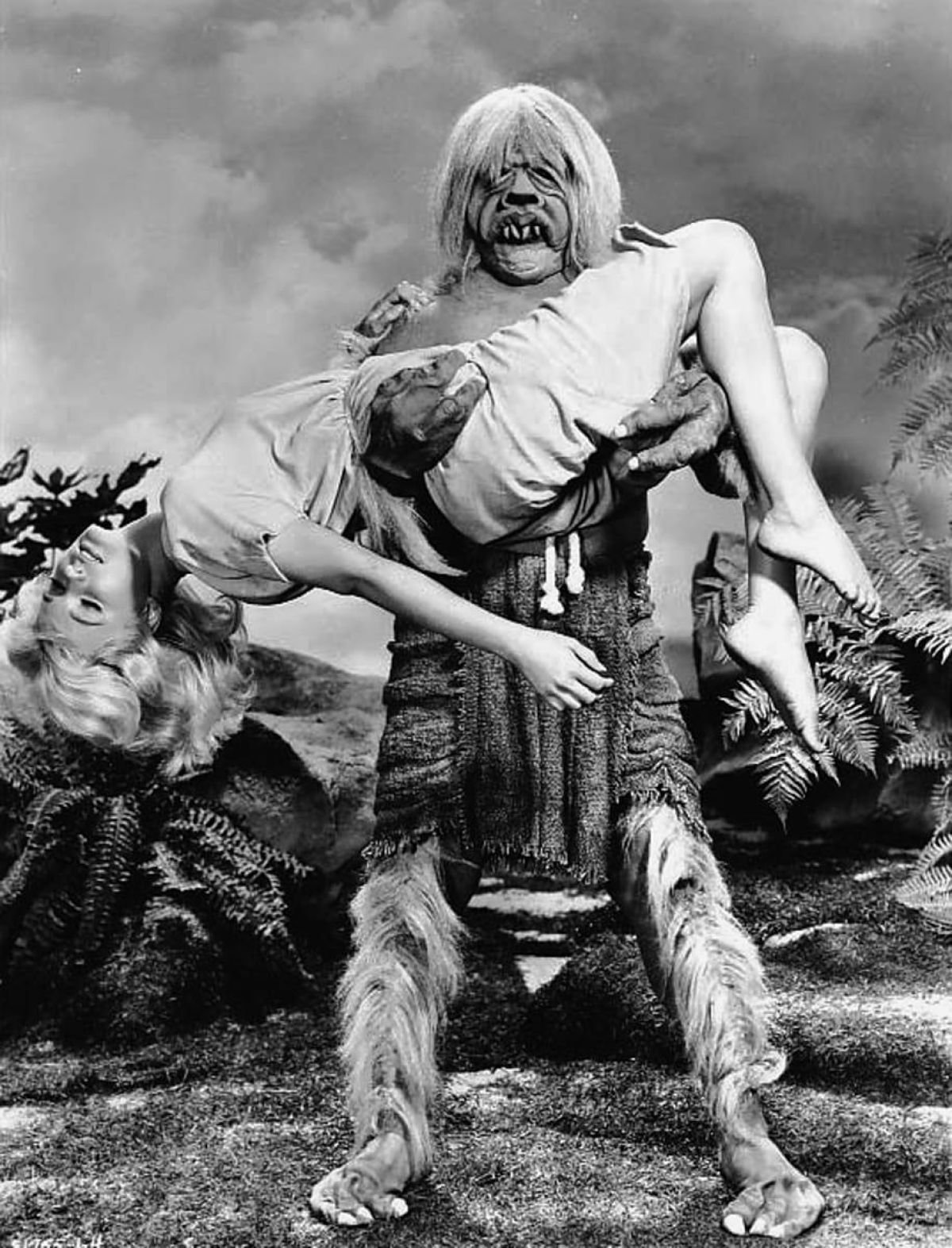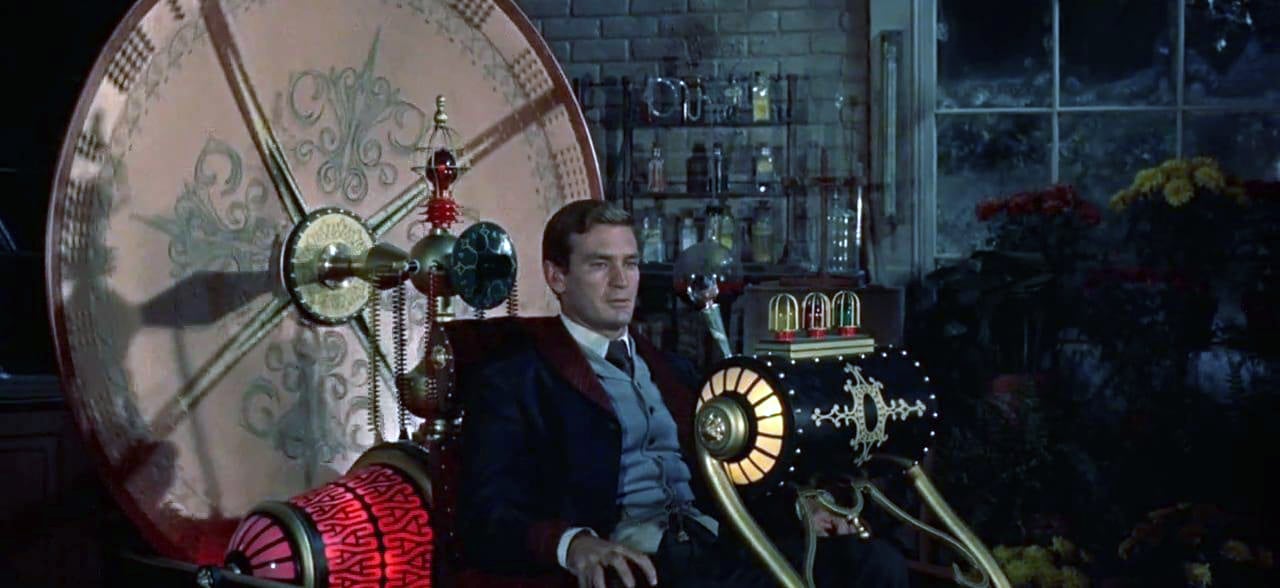
The Photography of MGM’s The Time Machine
Paul C. Vogel, ASC employs unique lighting choices and cinematographic innovations for the H.G. Wells classic.

By Darrin Scot
MGM’s production of H.G. Wells’ science-fiction classic The Time Machine, is a rousing adventure into the fourth dimension of Time — transporting the hero of the story (along with the audience) forward to the year 802,701 A.D. George Pal’s visually imaginative production achieves striking impact through the art direction of George W. Davis and William Ferrari, the special photographic effects of George Warren and Wah Chang, and the outstanding color cinematography of Paul C. Vogel, ASC.
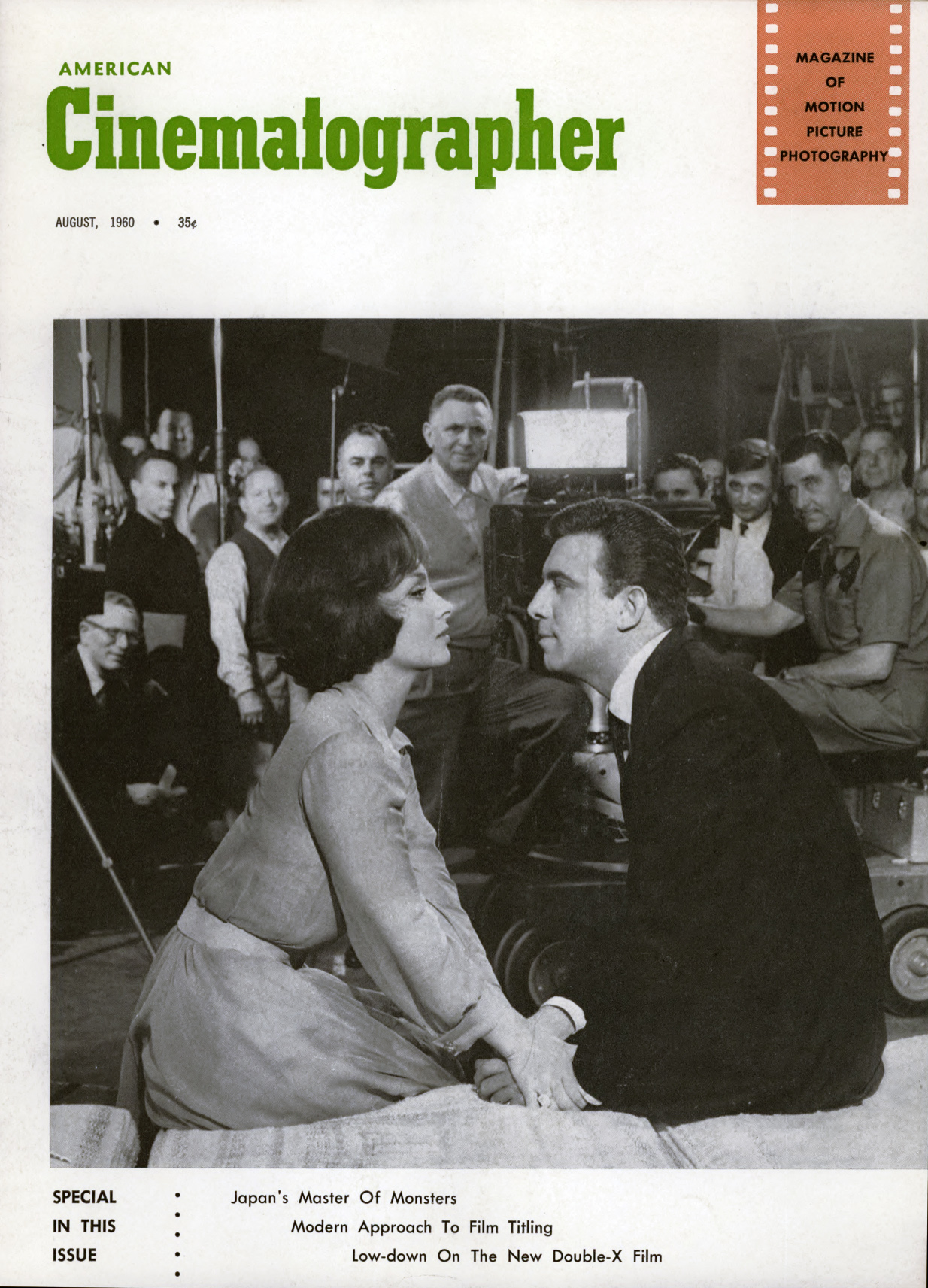
Briefly synopsized, the plot concerns a young Victorian scientist (identified only as “The Time Traveler”) who, in the year 1899, invents a vehicle capable of voyaging into the fourth dimension — Time. After making a successful test with a tiny scale model, he goes into his laboratory, climbs into the seat of his passenger-sized Time Machine, and slowly pulls the lever.
The walls shake, lights dim, and he is off on his fight through the future. At first, he goes slowly, advancing only a couple of hours. Then, bolder, he pulls the lever all the way back and whirls away into time. Through the large skylight in his laboratory, we can see the sun racing across the sky, the stars blinking on, the moon skimming by in its orbit, and a tree changing from bare branches to blossoms to full foliage as the seasons rush by. As he goes even faster, his headlong flight through the years is whimsically illustrated by rapid costume changes on a mannequin in a shop window across the street from his house.
He interrupts his startling voyage with stops in the years 1917 (World War I), 1940 (World War II) and 1966 (when he finds an all-out World War III raging). The cataclysms of the nuclear warfare set off earthquakes, as a result of which he and his machine are engulfed by lava and trapped in a rocky tomb until, 8,000 fleeting centuries later, erosion sets him free and he halts the machine for the last time in the year 802,701.

He steps forth into a veritable Paradise of exotic trees and rushing rivers where once had been his London home. This lush locale is populated by a race of blond adolescent boys and girls, the Eloi, who are strangely apathetic to everything about them. They live in a sort of vegetable state above the ground, held in bondage by the Morlocks, a race of hideous creatures — half-man, half-ape — who live in the darkness of caverns deep underground. Weena, a beautiful Eloi girl, explains to the Time Traveler that the Morlocks feed and clothe them, but the Eloi must do as they command. When they are summoned below by the Morlocks, they go and never return.
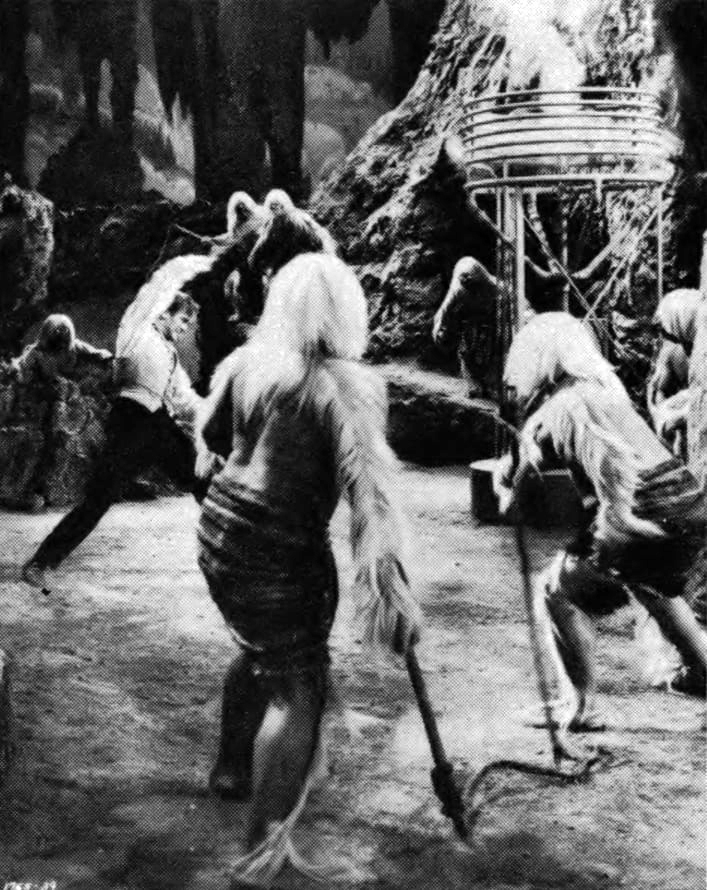
In quest of his Time Machine, which has been stolen by the Morlocks and locked behind the panels of a huge bronze sphinx, the Time Traveler chances upon a cavern filled with skeletons. It dawns on him that the underground denizens are cannibalistic and that this is why the Eloi never return from the Morlocks’ caverns.
He is determined to inspire the Eloi to defend themselves and build their civilization. But when a low siren is heard, the Eloi — including Weena — walk entranced to the Sphinx and enter the open panel. It closes before the Time Traveler can reach it.
Climbing down an air-shaft into the subterranean caverns, he finds the Morlocks herding the Eloi to their fate. Knowing the Morlocks are afraid of fire, he attacks them with a torch. First Weena and then the other Eloi respond to his cries to help him fight, and finally, the Morlocks are subdued — their domain left in flames.
He jumps in his Time Machine and spins back through the ages to a date five days after he started the journey. He relates his story to waiting friends, but they are skeptical. Determined to rejoin Weena and help the Eloi build a new world, he once more mounts the Time Machine and whirls off into the future.
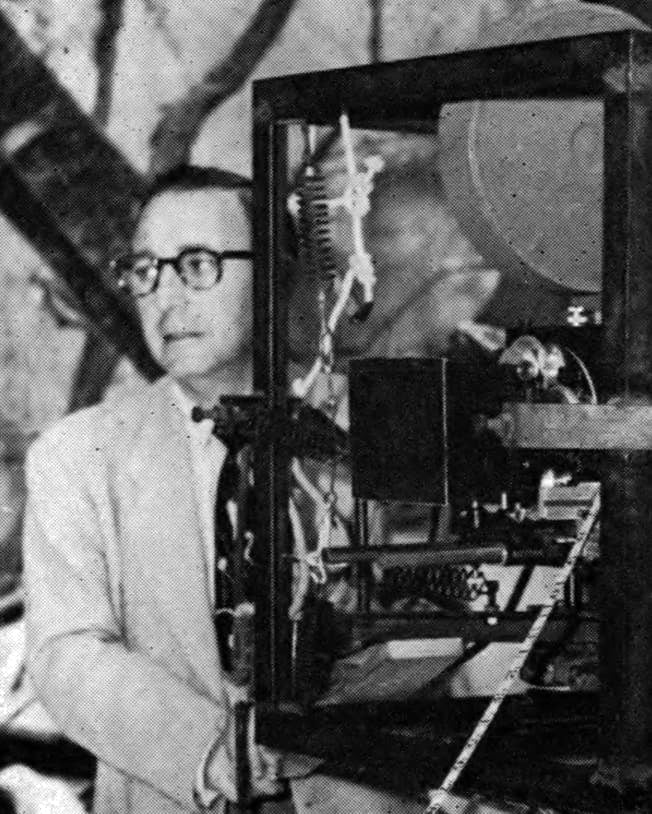
Photographing a story like The Time Machine was an interesting challenge to Director of Photography Paul Vogel—not only because it was loaded with problems of a mechanical nature, but because a certain correct psychological aura had to be created and maintained. The story is not fantasy, but science-fiction — something that very possibly could happen when Man’s knowledge of physics progresses a bit farther. Therefore, everything that happened had to be visually believable. Whereas Vogel might have used fog filters or other obvious devices to suggest the exotic character of life on this planet 8,000 centuries hence, he wisely avoided them — and the result is much more credible.
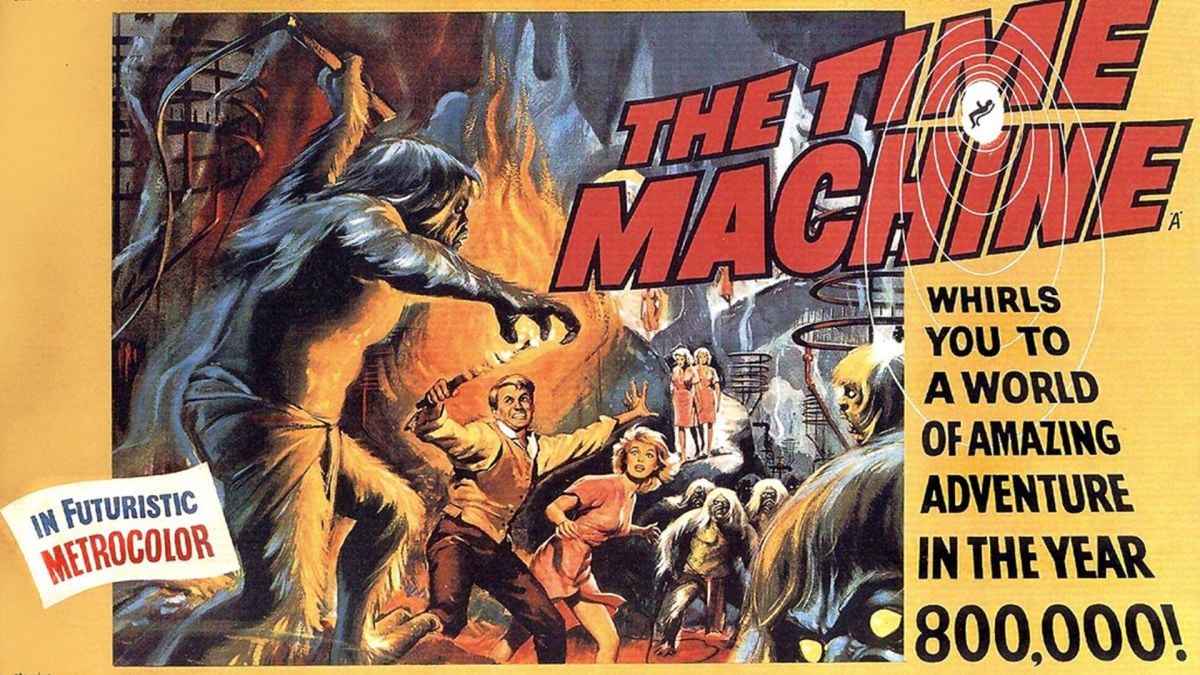
The film begins, conventionally enough, in the Time Traveler’s London home just at the turn of the Century. The set is richly designed to the Victorian era with its wood-paneled decor and rococo furnishings all done in lush warm tones. Vogel illuminated this set with amber light to paint up the mellow atmosphere of the period and to provide a strong visual contrast to the futuristic goings-on that were to follow. In moving into the future the technical problems increased accordingly.
For example, when the Time Traveler takes off through the fourth dimension, his machine is located in his laboratory. Since the roof of the room is mainly open skylight, the light or darkness outside sets the lighting key for the scene. As the Traveler whirls faster and faster through Time, this lighting key must change accordingly.
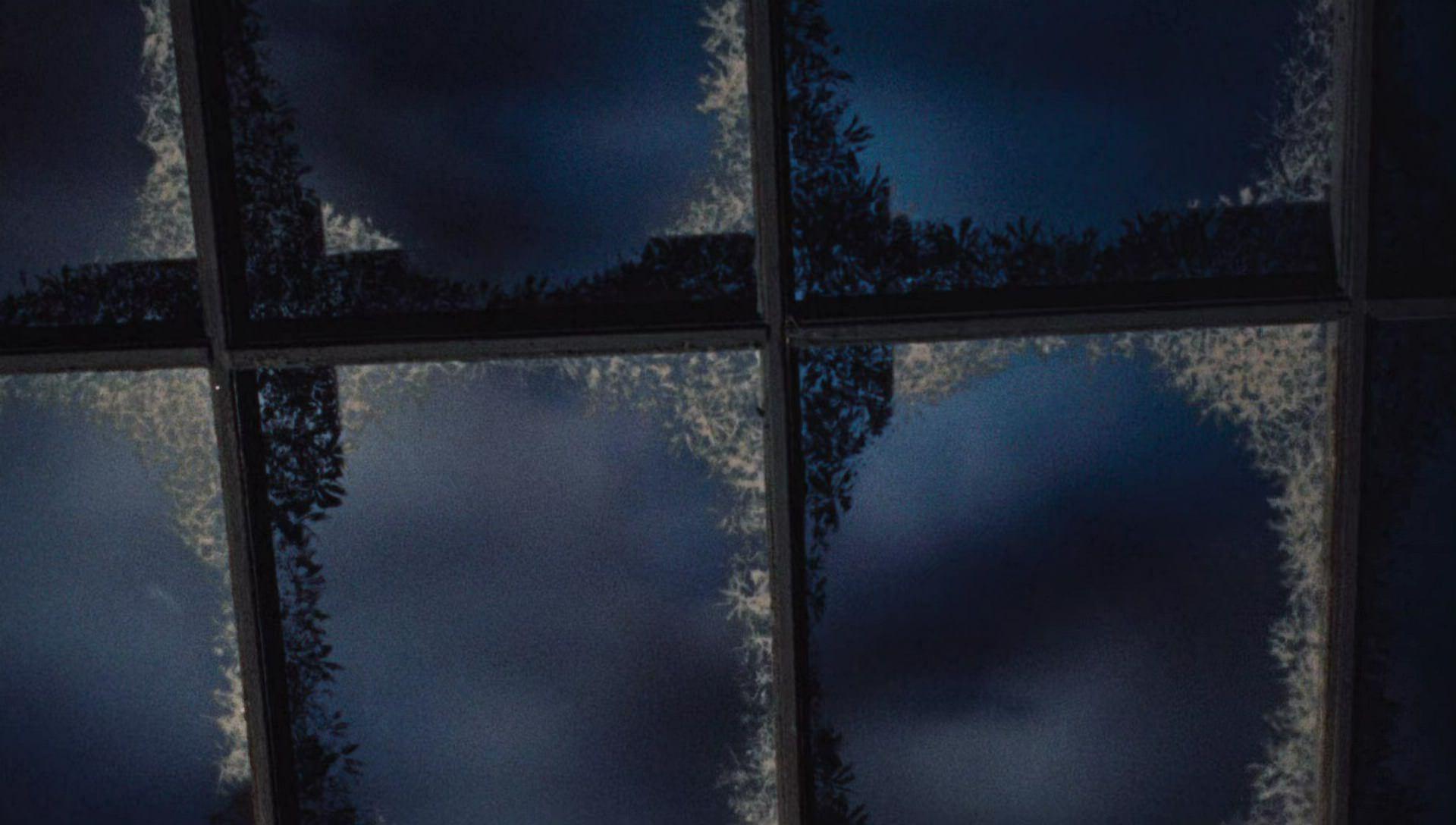
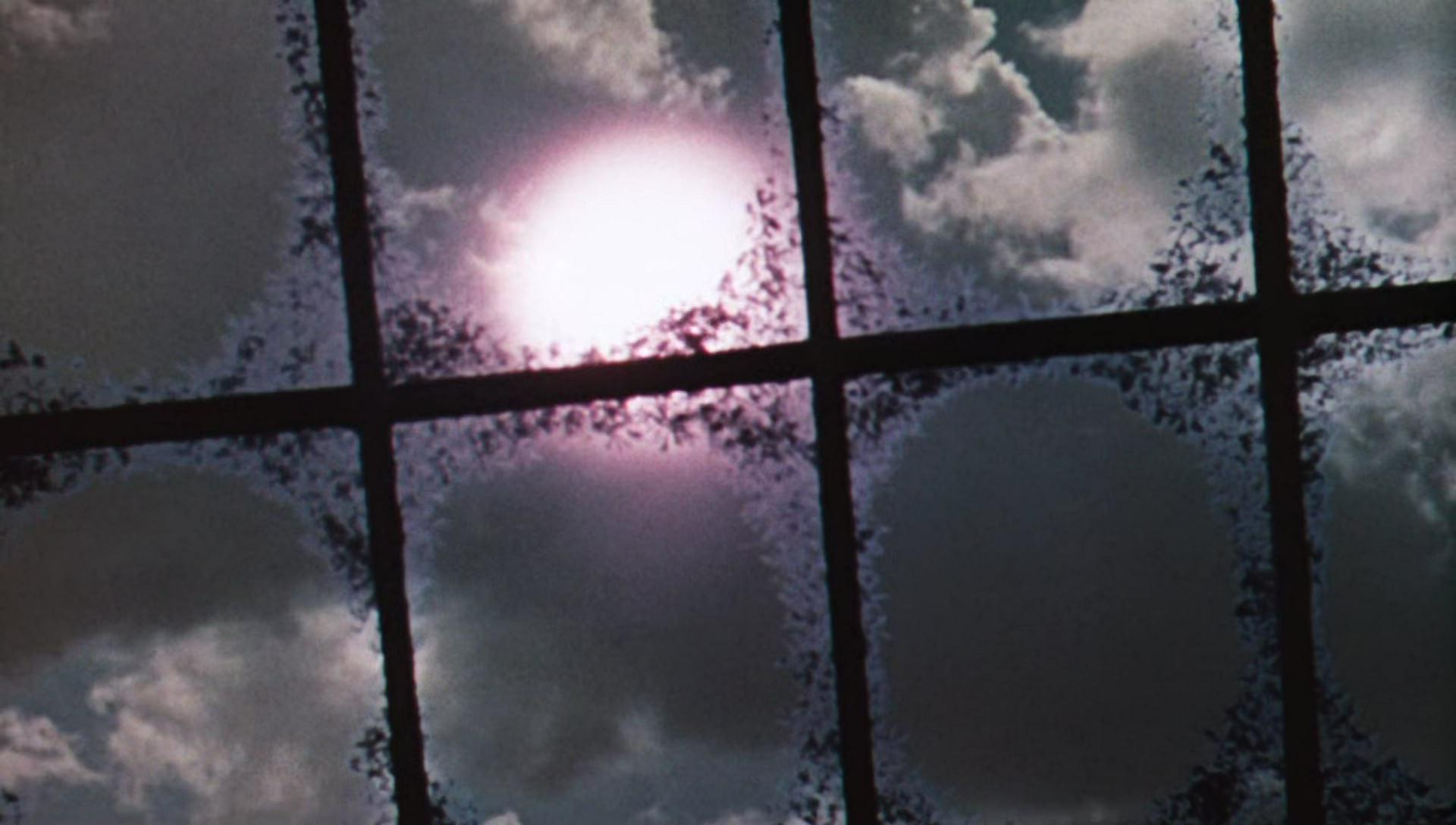
In order to simulate such an effect, Vogel had huge circular shutters built and mounted in front of each “brute” arc used to light the scene. These discs, roughly 7' in diameter, were divided into four segments like a pie. One segment was left clear to indicate daylight, another had a pink gelatin (#14) to indicate sunrise, another had an amber gelatin (MT-2) to indicate evening, and a fourth had a blue gelatin (#25) to indicate night. As each day flew by in a matter of seconds these discs were turned by hand from below by means of a chain and gear arrangement. Simultaneously the arcs were raised and lowered by means of see-saw devices to contrast the high light of midday with the low light of evening. Arcs illuminating the backing outside the window were alternately masked by mechanically-operated flat shutters synchronized with the discs.
In the sequence where the Traveler speeded up the machine so that each day became a mere flicker, Vogel had the circular shutters converted so they were composed of alternating black-and-white segments only. The shots through the skylight showing the rapidly changing conditions outside were accomplished later by means of special effects animation to coincide with the changing light on the set.
Aside from the main challenge of synchronizing all of the discs, shutters, and see-saws so that a uniform result would be produced, there was the problem of balancing the light intensities as they were transmitted by the different colored gelatins, so a consistent exposure could be maintained. For example, the blue gelatin transmitted only ¼ the amount of light passed by the clear segment. To equalize exposure, the pink and amber gelatins were doubled in thickness and white gauze was placed over the clear areas.
Creating these lighting effects right on the set not only produced a much more realistic result but saved thousands of dollars which otherwise would have been spent to produce a similar effect by means of optical printing.

As the Traveler is entombed by the lava flow — presumably for thousands of centuries of rushing time — he is seen against a background of huge rocks piled around his Time Machine. The sequence was shot against a solid blue backing to permit double printing of the rock background. As the erosion of time gradually liberates him, the rock background melts away by means of animation. However, the rocks piled about the machine were the real thing, and these had to be pulled out of the way precisely on cue by means of concealed wires.
As the Time Traveler makes brief stops along the way in his flight through time, the changes in his physical surroundings had to be made apparent. In his laboratory, this was done by gradually aging the set until it seemed actually to fall apart in ruin. The street outside his home proved more of a problem since a large area had to change radically in character through the ages. This was accomplished by photographing several scenes in a variety of locales, then combining them as traveling mattes to form a single composition. Although the resulting composite was produced through optical printing, the several scenes involved had to match exactly in photographic character in order to produce a realistic blend.
The sequences showing life 8,000 centuries in the future called for a strong photographic contrast between the above-ground world of the Eloi and the underground domain of the dreadful Morlocks. In shooting the lush Eden of the Eloi, Vogel kept the illumination bright and relatively flat by using a front light source. The result enhances the almost two-dimensional character of the docile Eloi moving about their never-never land in a semi-dream state.

The Morlocks, on the other hand, were shadowy, sinister creatures who were never, at any time, to be shown too clearly. They are first seen only as patches of luminous gray-green darting about the shadows of the night foliage. Later, in their underground habitat, we see them a bit more clearly, but they are kept shadowy — not only to preserve the horror of the unknown but to prevent the details of their elaborate make-up from becoming too obvious. Their physical aspect, designed by MGM Make-up Director William Tuttle, is a masterpiece of its type. The Morlocks, short and squat in stature, were covered with green latex “skins”, and their faces distorted by grotesque masks having electrical “eyes” that glowed in the dark. The actors portraying these creatures (as ugly a lot as ever assembled on a sound stage!) held in their hands tiny switches connected by thin wires concealed in their rubber suits, by which they controlled the eye lights.
Theoretically, there was no light at all in the underground caverns — and yet, the action had to be visible. Vogel gained the desired visual effect by using almost no front lighting, rimming the Morlocks with back-light and employing cross-light of a greenish hue that seemed to emanate from odd machines that bubbled and sputtered in the background. The light problem was further complicated by the fact that the set was too narrow to permit the use of floor lighting units; all lamps had to be mounted overhead. This created special difficulties in the fight sequence where the action ranged over a wide area of the set.
In lighting the cavern in which the Time Traveler finds the skeletons, Vogel used green light exclusively in order to point up the horror of the situation. He also devised an interesting effect to show that the Morlocks, living their bat-life existence, could be blinded by even a small amount of light; as the Time Traveler lights matches to ward them off, we see from the Morlocks’ subjective point of view how these dim flickers appear to them as blinding flashes of light.
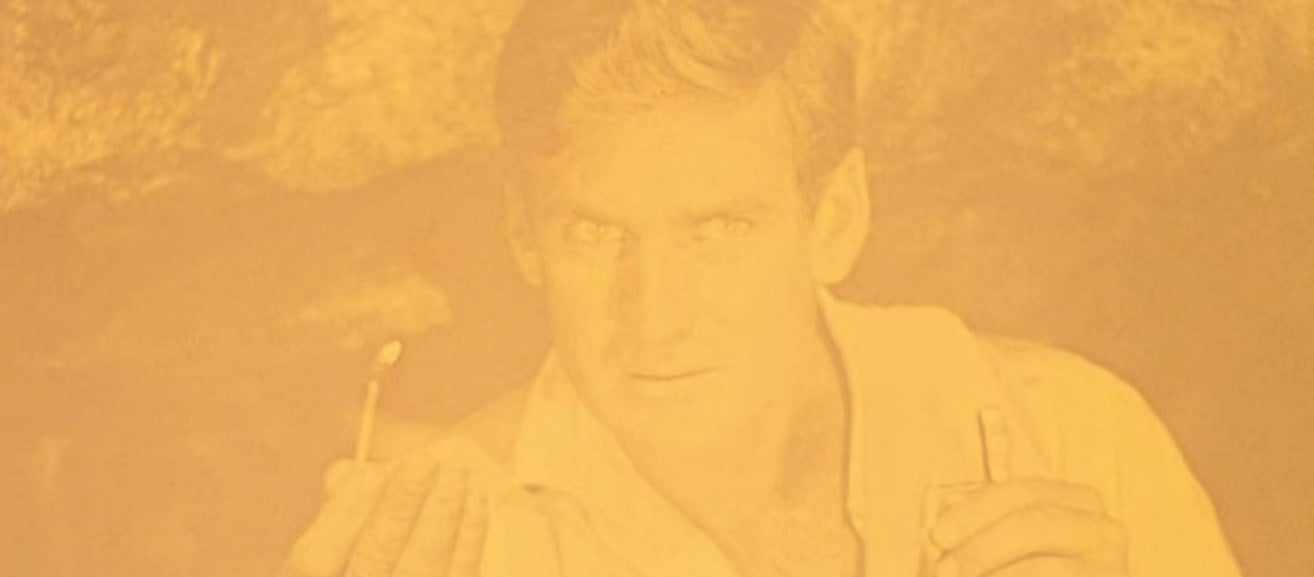
Another intriguing photographic challenge was that presented by the “talking rings” sequence, in which Weena shows the Time Traveler a weird apparatus leftover from some bygone age and which was apparently used for recording and playing back the human voice. The machine consists of a wide pedestal with a translucent top. As metal rings about 3 inches in diameter are spun on its surface, it begins to glow with a strange phosphorescence and a voice is heard telling of happenings in the past.
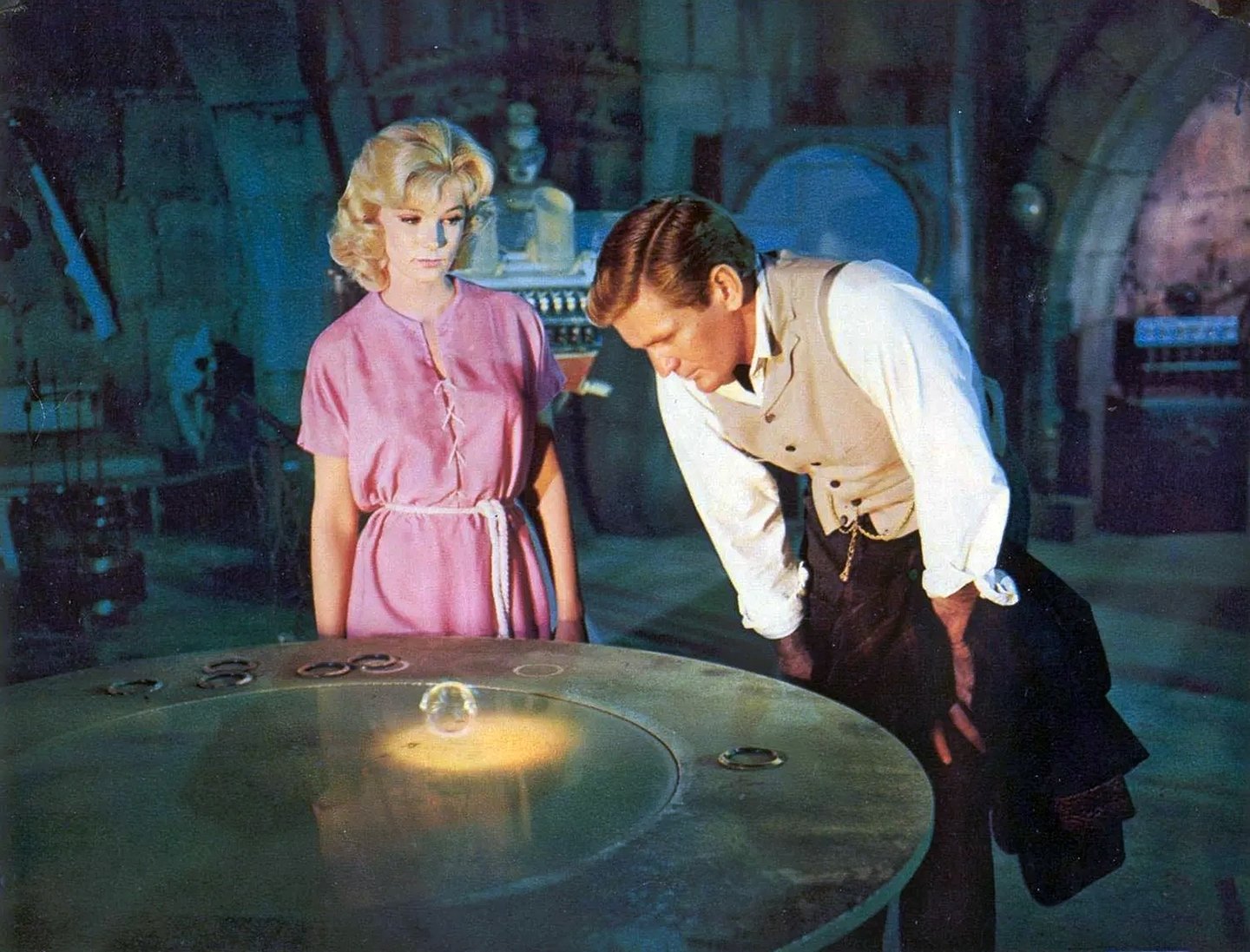
Beneath the glass was a dimmer-controlled light that could be varied in brightness as the rings spun and died down. In one deceptively simple shot, the camera starts on a two-shot of the man and the girl, then pans down to show the rings and the images of the two reflected on the surface of the machine’s glass panel. In order to effect this photographically, a tricky feat of mechanical synchronization had to be accomplished. As the camera panned down, the light on the two players was increased sufficiently for them to be reflected on the surface of the glass. Simultaneously, the camera shutter was opened wide to permit full exposure of the reflection.
The Time Machine, although made on a relatively low budget, is not only absorbing entertainment but a technical accomplishment of no small proportions and an excellent example of lighting and photographic innovation.
